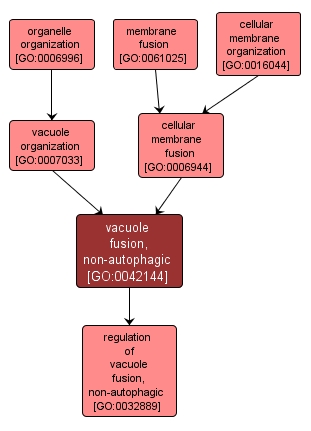GO TERM SUMMARY
|
| Name: |
vacuole fusion, non-autophagic |
| Acc: |
GO:0042144 |
| Aspect: |
Biological Process |
| Desc: |
The fusion of two vacuole membranes to form a single vacuole. |
Synonyms:
- homotypic vacuole fusion
- GO:0042145
- homotypic vacuole fusion, non-autophagic
- vacuole fusion (non-autophagic)
- homotypic vacuole fusion (non-autophagic)
|
|

|
INTERACTIVE GO GRAPH
|














